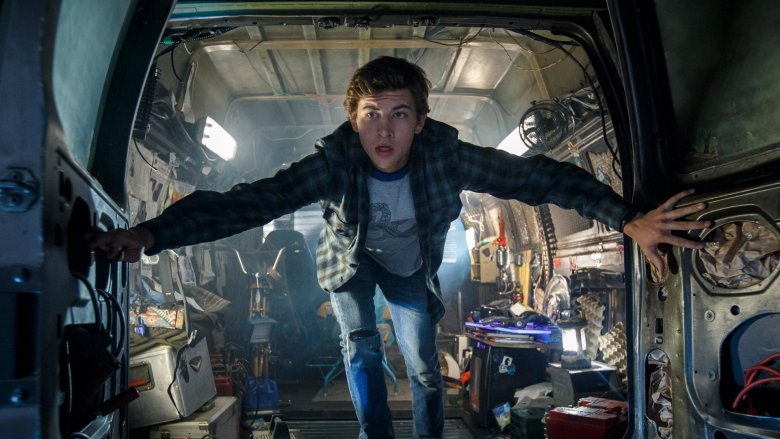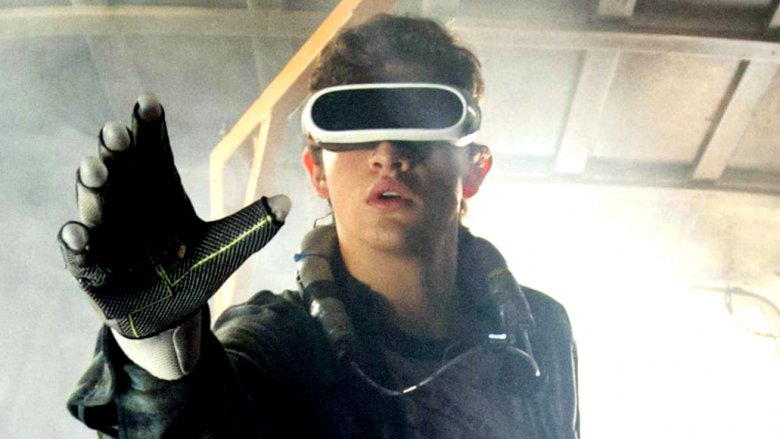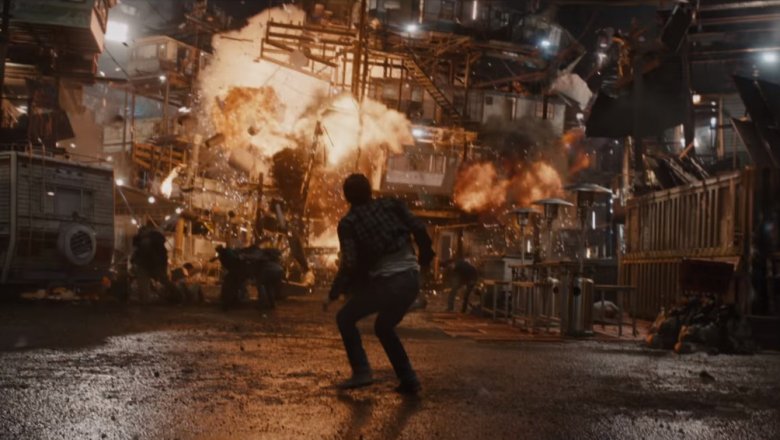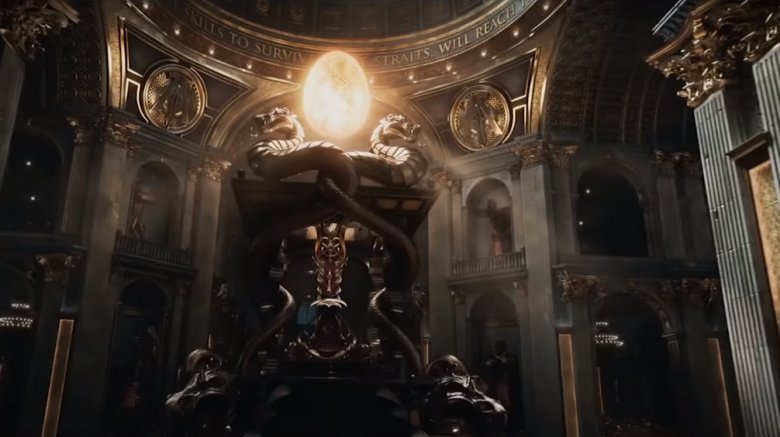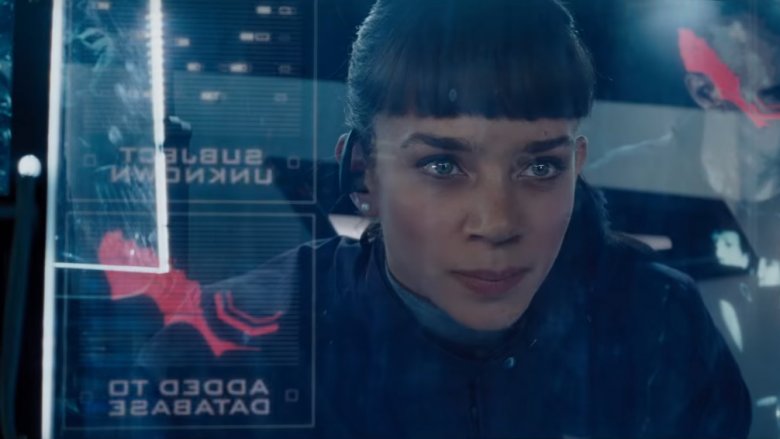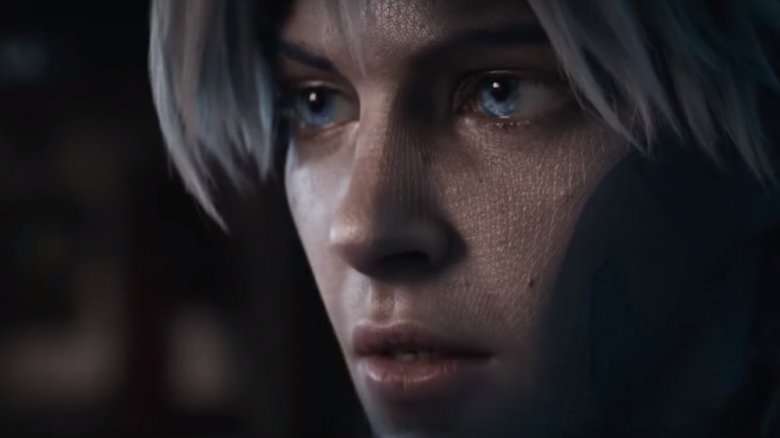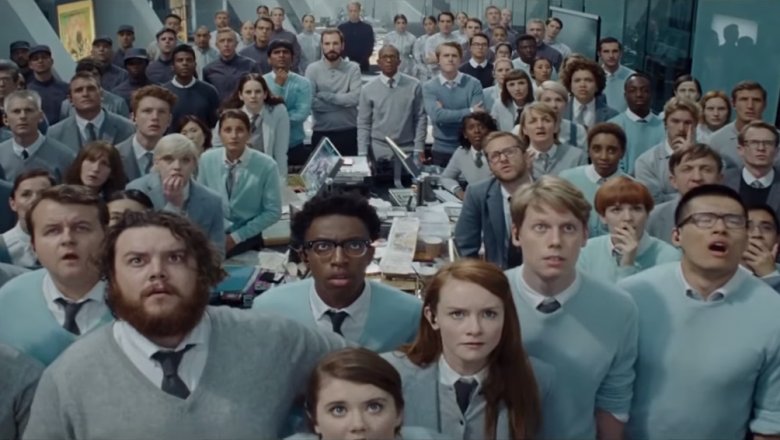Ready Player One Is Blowing Audiences Away
Eight years in the making, Steven Spielberg's adaptation of Ready Player One has finally arrived. The movie has been in the works since before the book that shares its name was even published, and now that it's been released, audiences are weighing in.
Over the course of its development, Ready Player One has been a lightning rod for anticipation and criticism, with fans and haters taking turns teeing off on the movie over its merits, or lack thereof.
The central idea of Ready Player One's story — nostalgia as a means of liberation — has been both a big part of the property's success as well as its biggest magnet for criticism. As a result, many commentators have spent the wait for Spielberg's movie wondering if the critical response to the film would be as divided as the response to the novel that inspired it. Further, they wondered if general audiences would bite on the movie to the same degree that readers flocked to the book. For whatever reason, by the metric of many writers, the movie was just a bad idea.
Now that the movie has rolled out to audiences, it's winning the public over in some surprising ways. What's so cool about the future-set adventures of Wade Owen Watts and his extremely online team of virtual misfits, the High Five? Read on to find out all of the reasons why Ready Player One is blowing audiences away.
A celebration of shared memories
Released in 2011, Ready Player One by Ernest Cline made waves upon release for its unapologetic fixation on nostalgia — specifically nostalgia-inducing media properties of the '80s, '90s, and today.
Cline's novel is set in a dystopian near-future wherein a virtual reality space called the OASIS has come to be humanity's main mass distraction. When the simulation's dying inventor reveals he's left a literal Easter egg inside the digital world that will grant whomever finds it administrative powers over his creation — as well as all of his billions — the aimless users of the OASIS are suddenly inspired with new purpose.
Over the course of the next five years, one user, Wade Watts, embarks on a quest with the rest of the world to compete against and collaborate with each other on a frenzied hunt for the treasure.
Wade, who goes by the name of Parzival when he's online as his digital avatar, comes to be known as one of the OASIS' many active "gunters," a.k.a. "egg hunters" — groups of users or solo players all working to decipher the developer's clues and be the first to find the egg.
Thanks to the inventor's own personal nostalgia for his childhood in the 1980s, finding the egg requires players to become living catalogs of antiquated pop culture, taking the world's shared memories and turning their finer details into vital, life-changing knowledge. In this world, an encyclopedic memory of pop culture doesn't make you a nerd — it makes you a hero.
Big hits, deep cuts
So what sort of throwback material does Ready Player One actually mine? Thanks to the conceit of the OASIS, the answer is extremely wide-ranging — and that's a big part of the book's appeal.
The biggest trick of the book is the way it makes references to major recognizable properties and small ones at the same time. Shoutouts include both the universally familiar and the über-obscure, with video game references ranging from the well-known Pac-Man to the unknown Dungeons of Daggorath.
It goes on like this for everything. For American geeks, there's Star Trek and Star Wars, with Mobile Suit Gundam and Akira for otaku. Everyone's heard of J.R.R. Tolkien, but only a relative handful have paged through Zelazny's Chronicles of Amber. What about the comedy fans? Well, there's Monty Python for the wide audience, Spaced for the nerdy connoisseur — and so on.
It's not the kind of thing you necessarily notice while you're reading, but the references to works both well-known and obscure makes exploring the book a rewarding experience for everyone, from the casual geek who likes Battlestar Galactica to the studious nerd enjoying an 11th rewatch of Firefly. Fans of Pink Floyd will understand some references; fans of The Alan Parsons Project will get even more.
Think of the trick as being like difficulty levels in a video game. If Ready Player One is an interactive experience for the reader when it comes to its nostalgic conceit, then the story's been fine-tuned with references that are easy, medium, and hard. Everybody gets to have fun.
New and improved
Though Ready Player One is an award-winning New York Times bestseller that made its author millions, not everyone was on board with the nostalgia trip. Critics of the book railed against it for the same reasons others championed it, calling it shallow and pandering. Indeed, some of the book's more dense passages of celebratory nostalgia can come off as little more than trivia — a list of stuff to recognize, names of things that made you happy as a teen.
In making the jump from book to the big screen, many of the story's more grating edges appear to have been sanded down. A review of the movie from The Verge says that the film "improves immensely on the book," ultimately concluding that the novel's "endless references work better on the screen."
It's a sentiment that's been shared by many critics, who have noted the excision of "the book's dorkier elements" in favor of material more suitable for casual audiences and a crowd-pleasing experience.
It's a credit to the screenplay's co-writers, Cline and Zak Penn, that they were evidently able to size up the book, identify what worked, and were willing to change up the rest. Where the book at times came off as full of itself, the movie is all about bringing viewers in on the excitement, thereby improving on what was already there. Fidelity to the source material isn't the most important thing about adaptation — the real vital thing is never forgetting that your audience wants to be entertained.
The Spielberg element
Reviews of Ready Player One have also taken note of the movie's secret weapon, hiding in plain sight: director Steven Spielberg.
When Ready Player One's movie adaptation was first connected to Spielberg, many fans of the popular filmmaker made their disapproval of the decision widely known. Detractors argued that the material was beneath a director of Spielberg's caliber — that such naked nostalgia worship had no place in the filmography of one of the world's best.
It wasn't until audiences got a look at the movie that people started to realize that Spielberg might not only be a good choice to adapt this movie, but a perfect choice. In Spielberg's hands, the material's become not just one nerd's recitation of all the pop culture he knows, but rather a communal celebration of the whole moviegoing public's shared experiences with popular art. Reviews of the film touched on how important Spielberg turned out to be in adapting the book, which put many readers off with its sometimes self-satisfied tone.
While many reviews label the movie is a bit of light entertainment, it's not necessarily a criticism. After all, Spielberg knows that Ready Player One is not high art, or rich drama. It doesn't need to be — it just needs to be fun. Speaking at the film's premiere, Spielberg told the audience, "This is not a film that we've made, this is — I promise you — a movie." He's right that there's a difference. A film might have been self-serious; Spielberg's movie is a good time.
Takes you back, doesn't it?
Just like Cline's novel, Ready Player One is all about the joys of things long past. Also like with Cline's novel, the movie's success relies a whole lot on its timing.
Ready Player One lands at the perfect time for nostalgia's 30-year cycle, arriving in a culture that's been picking over memories of the '80s for a good while now. (Stranger Things and synth-pop, anyone?) With so many classic staples of nerd and geek culture having come to the fore in the '80s and '90s, every potential viewer who grew up in those eras already has a built-in inclination to go along for the ride.
On top of that, in a remarkably clever move, the Ready Player One movie includes references to pop culture material totems that are just emerging today, like the video games Overwatch and Mass Effect, or characters of the DC Extended Universe like Harley Quinn, the Joker, and Deathstroke.
No one's exactly nostalgic for those properties right now — but in 30 years, they certainly could be. The trick makes the movie not just relevant as a nostalgic trip to generations of today, but also to viewers watching in years to come. To a certain extent, Ready Player One is future-proofed, designed so a viewer 30 years from now can watch the movie and smile, inspired to remember their days back in middle school maining Tracer in Overwatch and trying to convince their parents to let them drop out and go pro.
The crowdsourced verdict
Ready Player One made its debut in March at the SXSW Conferences and Festivals in Austin, TX, and reactions to the premiere quickly spread far and wide.
The consensus that emerged was clear — while Spielberg's movie could not (and didn't try to) shed the dependence on nostalgia that fueled the entire Ready Player One book, the film version took what was there and improved it, making for a winsome adventure that worked far better than many had expected. Spielberg's direction gave the movie heart and soul, infusing it with a populist spirit that the book, for all of its exhaustive trivia from the peaks and valleys of pop culture, didn't always have.
Ultimately, Ready Player One emerged as an entertaining distraction — nothing that will change your world, but more than enough to occupy your afternoon. The book was faulted for valuing nostalgia over story, but the movie treats nostalgia as the story. When it washes over you in well-rendered, cinematic fashion, it's almost an experience like the OASIS itself, a virtual trip through our shared history of music, movies, books, games, and all of the geekiest ideas in any format that we've grown over the years to love.
